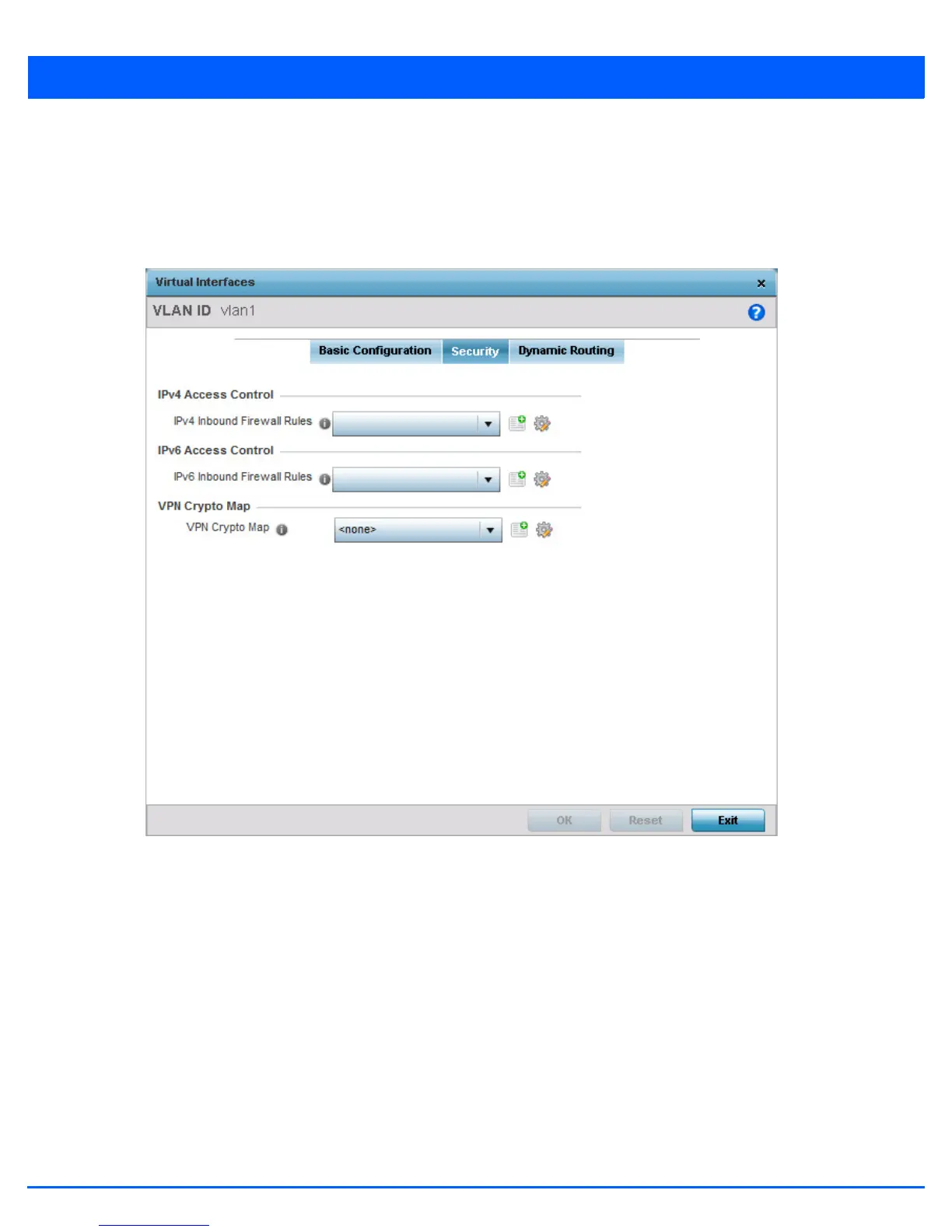5 - 242 WiNG 5.6 Access Point System Reference Guide
33. Select the Security tab.
The firewall inspects and packet traffic to and from connected clients.
If a firewall rule does not exist suiting the data protection needs of this Virtual Interface, select the Create icon to define
a new firewall rule configuration or the Edit icon to modify or override an existing configuration. For more information, see
Wireless Firewall on page 8-2.
Figure 5-158 Device Overrides - Virtual Interfaces Security screen
34. Use the IPv4 Inbound Firewall Rules drop-down menu to select the IPv4 specific inbound firewall rules to apply to this
profile’s virtual interface configuration. Select the Create icon to define a new IPv4 firewall rule configuration or select the
Edit icon to modify an existing configuration.
IPv4 is a connection less protocol for packet switched networking. IPv4 operates as a best effort delivery method, since it
does not guarantee delivery, and does not ensure proper sequencing or duplicate delivery (unlike (TCP).
IPv4 and IPv6 are different enough to warrant separate protocols. IPv6 devices can alternatively use stateless address
autoconfiguration. IPv4 hosts can use link local addressing to provide local connectivity.
Use the IPv6 Inbound Firewall Rules drop-down menu to select the IPv6 specific inbound firewall rules to apply to this
profile’s virtual interface configuration. Select the Create icon to define a new IPv6 firewall rule configuration or select the
Edit icon to modify an existing configuration.
IPv6 is the latest revision of the Internet Protocol (IP) replacing IPv4. IPV6 provides enhanced identification and location
information for systems routing traffic across the Internet. IPv6 addresses are composed of eight groups of four
hexadecimal digits separated by colons.

